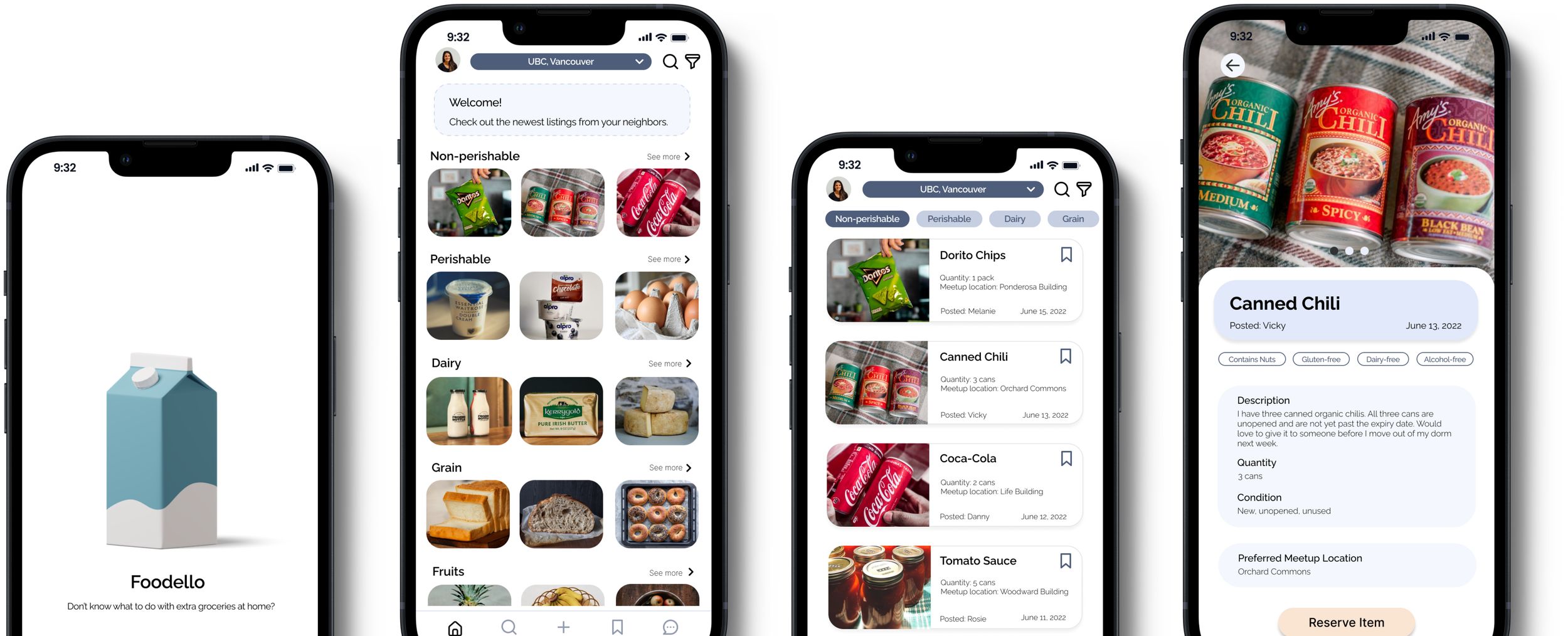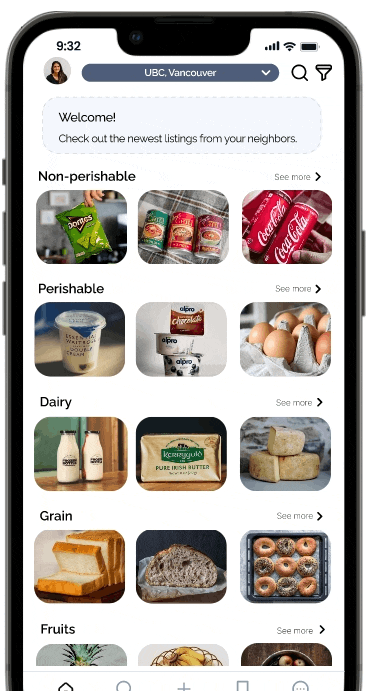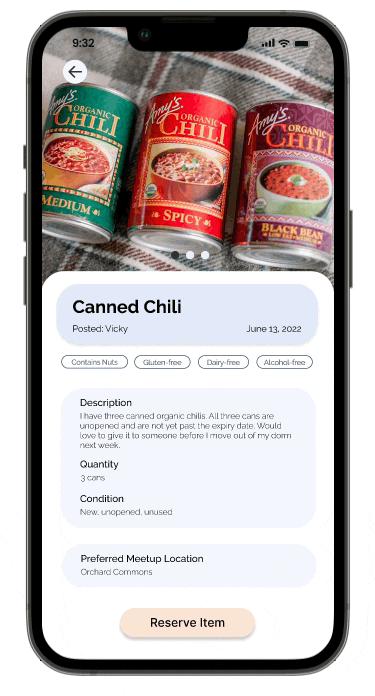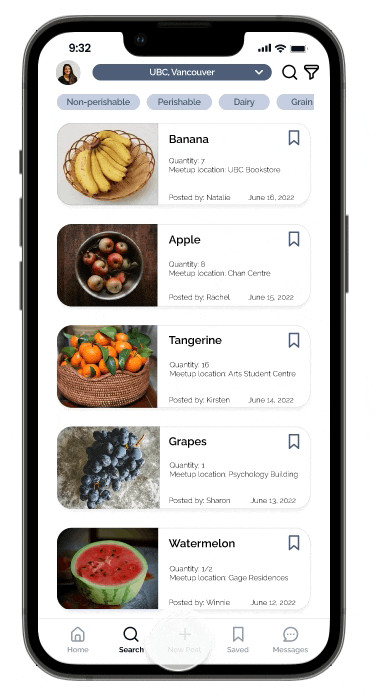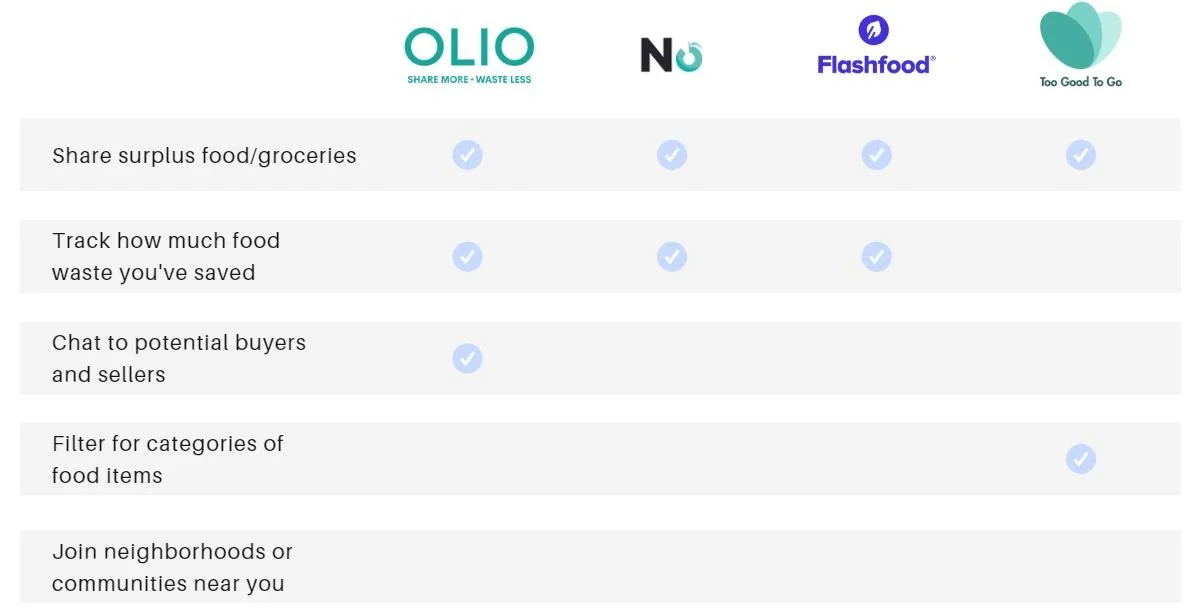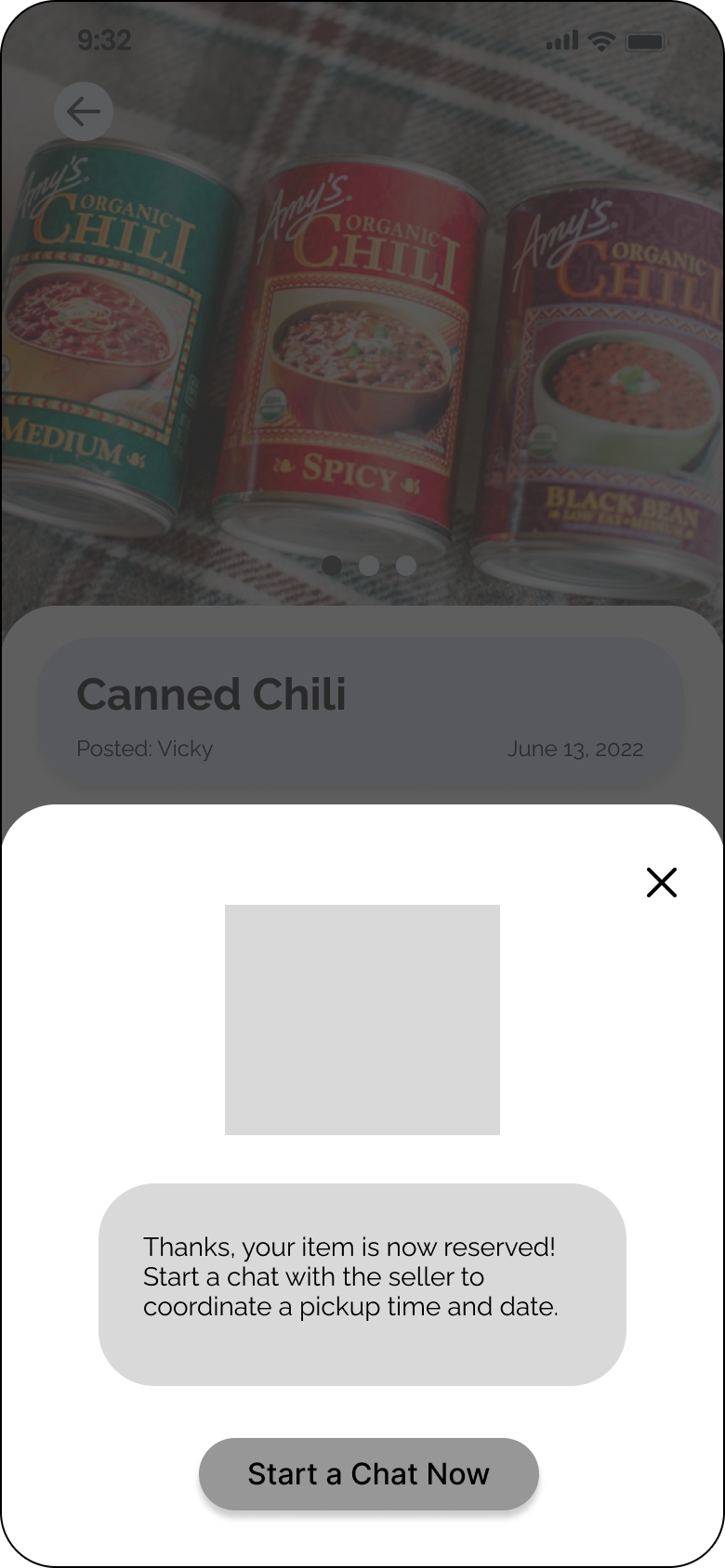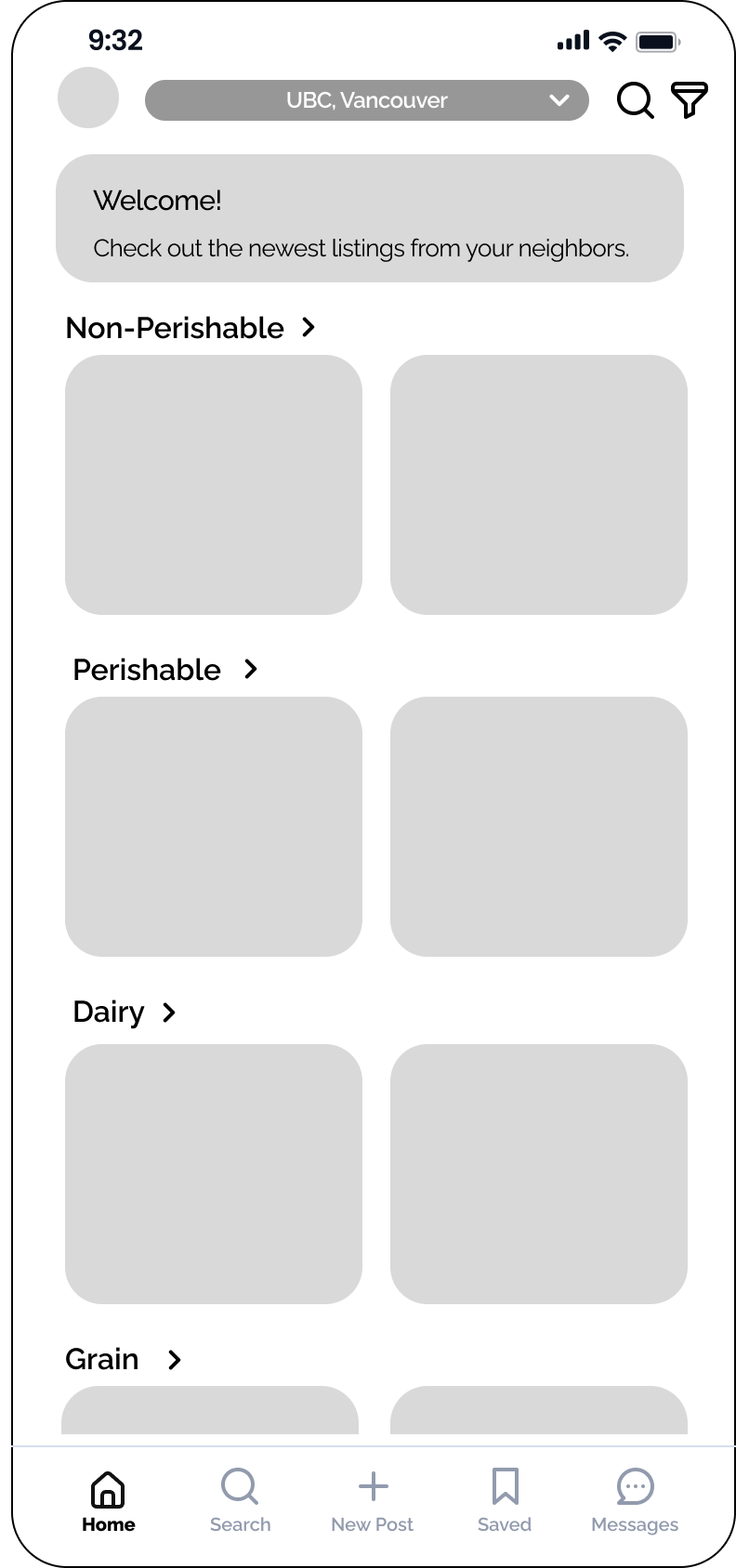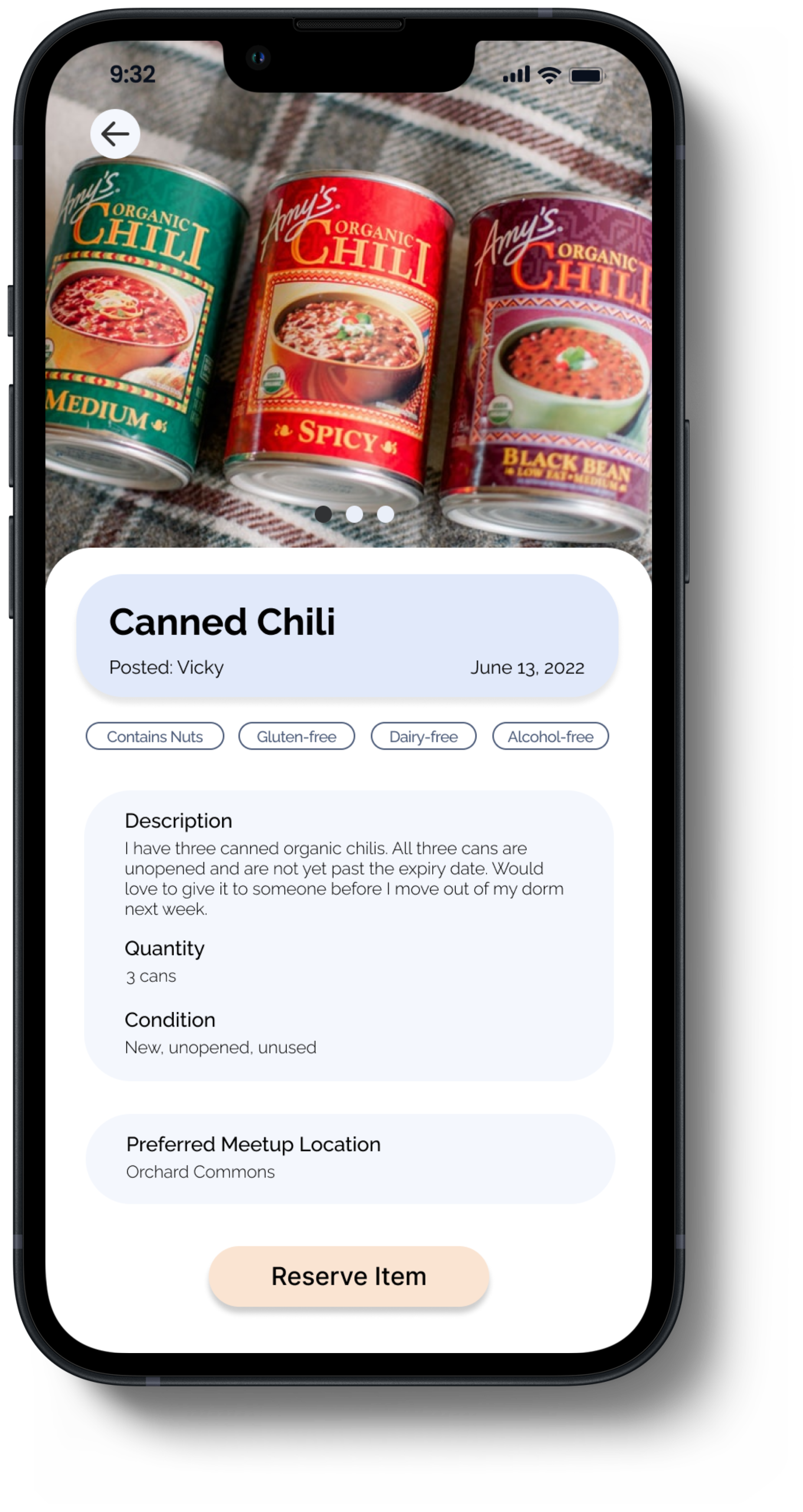
OVERVIEW
Role
UX Researcher
UI Designer
Timeline
June to August 2022 (10 weeks)
PROBLEM
Individuals who live by themselves have trouble buying food items that come in large quantities.
During undergrad, I knew several friends who moved to a different city for university. While they embarked on a new life away from home, the excitement of living alone for the first time was quickly shrouded by the frustrations of buying groceries for one person. They recounted their stories of visiting the grocery store and not being able to buy items that come in large quantities (i.e., bananas, eggs, loaf of bread) because they wouldn’t be able to finish eating it all before it rots or expires.
DESIGN CHALLENGE
How can we help reduce the amount of food waste for individuals who live alone?
SOLUTION
Foodello: A mobile app that provides individuals a platform to share excess groceries instead of throwing it away.
Browse listings of available food items
• Homepage displays the newest listings
• View items categorized into different food groups
• Users can view items on the homepage or use the search function for a more customized experience
Reserve and pick up interested items
• Reserve items that you are interested in
• Start a chat with the seller to coordinate the pickup time/location
Post listings of your own items
• Add your own listing of a food item
• Include details such as a picture, description, condition, food allergies and preferred meetup location
PROCESS
Empathize. Define. Ideate. Prototype. Test.
The design thinking process served as the foundational approach to my design strategy.
MARKET RESEARCH
The number of individuals living alone has more than doubled in recent years.
One-person households are now the most common type of household. In recent decades, the fastest growing demographic of one-person households are males aged 35 to 64. While the number of one-person households is increasing, the amount of food waste is also growing each year. The annual average food waste is estimated to be 30-40% of the U.S. food supply - this equates to 650 apples thrown away by every person in the country.
COMPETITIVE ANALYSIS
Similar apps offered a platform to buy and sell food items, but none of them solved pain points for individuals who live alone.
A competitive analysis was conducted to analyze existing products in the market in order to understand the gap in their features, comprehend where Foodello stands in the market and analyze how thorough Foodello can solve user pain points. The analysis revealed that there are many apps associated with purchasing groceries, but none of them addressed the pain points of grocery shopping for one.
USER RESEARCH
People who live by themselves often face challenges in purchasing the right amount of groceries for one person without wasting food.
Based on user research, these are the three main pain points for buying food items for individuals who live alone.
Individuals who live alone have a limited selection of groceries that they can purchase in comparison to larger households. It is harder to purchase items that come in large quantities, like a bag of apples or a large jug of milk. However, buying a smaller quantity comes at a higher cost.
Individuals who live alone are more prone to throwing away groceries because it is harder to finish consuming all the groceries by themselves before the expiry date. For instance, a bag of apples is easier to consume by a larger household before it rots in comparison to someone living by themselves.
Individuals who live alone find themselves eating little variety of foods in subsequent meals. For example, someone who bought a carton of eggs may feel inclined to eat more eggs in order to finish eating it before the expiry date.
The user research also revealed main user motivations. Along with user pain points, this became the basis for my designs.
An increasing number of people are now adopting more environmentally sustainable habits as they become more conscious about the amount of food waste they leave behind.
Individuals who live alone want to be able to buy groceries with ease without having to worry about the quantity and how much they are able to eat before the expiry date.
Millennials want to become more financially resourceful and reduce the amount of unused items that they throw away to the trash.
USER PERSONAS
IDEATION
Creating a mobile app to improve the accessibility for individuals to share excess groceries with others
The idea behind creating a mobile app was to establish a community of individuals who want to get rid of having excess groceries that they can’t finish, which is often the problem for individuals who live alone. By creating Foodello, it helps make the process of reducing food waste more efficient and accessible by providing users a platform to share excess groceries with others in nearby neighborhoods. Many individuals who live by themselves are Millennials, so a mobile app is created to cater to young adults who value efficiency and convenience.
USABILITY TESTING + DESIGN REITERATIONS
Three Main Design Improvements
#1: Users preferred having less clutter and information on a single page:
The page to post a food item is split up into three screens to reduce information overload on one single page. If there is too much information that users need to fill out in one page, they are deterred from filling it out and discouraged from posting an item. Simplicity is key in motivating users to create a posting!
Based on user feedback, the quantity of the item, condition of the item and preferred meetup location are important elements that should be included into a post. These additional elements are added into new wireframes.
Before
After
#2: The user interface of the screen below is redesigned to stay consistent with the user interface of other screens.
I experimented with opacity to achieve a glassmorphic appearance, but decided to abandon the idea in order to stay aligned with the design consistency of other screens.
Before
After
#3: Users wanted the ability to preview more pictures of food items in the “home” screen because this screen acts as a summary of items that they may potentially be interested in.
The initial design only allowed two pictures to be shown for each food category while enabling the user to vertically scroll downwards to look at items belonging to other food categories.
After iterations, the final design enables the ability for the user to scroll horizontally for each food category to look at more pictures of items. In addition to horizontal scrolling, users can also vertically scroll downwards as well.
Before
After
FINAL PRODUCT
Feature #1: Login
Feature #2:
Scroll postings
Feature #3:
View postings
Feature #4:
Post listings
Feature #5:
Earn points
PROTOTYPE
REFLECTION
This is my first ever UX/UI design project and I definitely had a great time exploring the world of design. From fumbling around on Figma to creating a full-on prototype, there were so many learning experiences with this project and it also sparked my passion to continue discovering more about UX/UI. I look forward to my next project where I can continue to enhance my design skills! Here are my main takeaways from my first project:
1. Conducting iterations and receiving feedback is key. Showing my designs to others helped me understand how the feedback of others can positively shape my design decisions. After all, it is the user who lives at the heart of the product.
2. Developing a user-centric mindset helps develop empathy. Learning how to think from the user’s perspective allowed me to come up with features that can truly help users overcome blockers and pain points.
I will continue to make improvements to Foodello as I focus on refining my design skills. Next steps will include:
1. Incorporate more inclusive and accessible elements into my designs.
2. Perform additional usability tests using various UX research methods that I haven’t tried before.
3. Experiment with dark mode.

